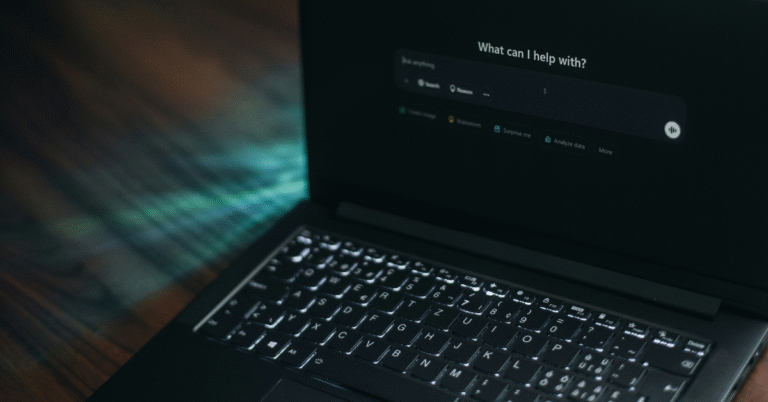
The ‘Dead Internet Theory’ Is Real—Here’s How to Protect Yourself
A chilling theory is gaining traction: The internet you know is “dead.”
- 60% of web traffic may be bots (Imperva 2023 Report)
- AI-generated content dominates social media (MIT Study)
- Fake engagement inflates viral posts (Forbes Investigation)
The Dead Internet Theory suggests that most online interactions are artificial—created by bots, corporations, and governments. Here’s how to spot the fakes and protect yourself.

🔍 What Is the Dead Internet Theory?
The theory claims:
✅ Social media influencers are often AI-generated personas
✅ Trending topics are manipulated by algorithms, not real people
✅ Comment sections are flooded with bot replies
✅ Search results prioritize SEO-optimized spam over real content
Evidence it might be true:
- X (Twitter) removed 1.4M bot accounts in 2023 (Reuters)
- Amazon reviews are 42% fake (Fakespot)
- AI-generated news sites rose 1,000% in 2024 (NewsGuard)

🤖 How to Spot Fake Content
1. AI-Generated Articles
🔴 Red Flags:
- Generic headlines like “10 Shocking Benefits of [Product]”
- No author byline or fake author bios
- Repetitive phrasing (e.g., “In today’s digital age…”)
✅ How to Check:
- Use GPTZero (gptzero.me)
- Look for unnatural wording in Hemingway Editor
2. Bot Social Media Accounts
🔴 Red Flags:
- Usernames with random numbers (@User_3829)
- High post frequency (50+ tweets/day)
- Generic replies (“Great point! 👏”)
✅ How to Check:
- Bot Sentinel (botsentinel.com)
- Reverse-image-search profile pics
3. Fake Engagement
🔴 Red Flags:
- Viral posts with zero organic comments
- Thousands of likes but no shares
- Identical comments under multiple posts
✅ How to Check:
- Twitter Audit (followeraudit.com)
🛡️ How to Protect Yourself
1. Lock Down Your Privacy
- Use DuckDuckGo instead of Google
- Enable two-factor authentication (2FA) everywhere
- Delete unused accounts with JustDeleteMe
2. Avoid AI Manipulation
- Install uBlock Origin to block ad trackers
- Use Invidious for YouTube (no algorithm)
- Read news via RSS feeds (bypass SEO spam)
3. Support Real Creators
- Follow verified journalists (BlueCheck on X)
- Engage with smaller communities (Discord, forums)
- Use Web3 platforms (Mastodon, Mirror.xyz)
💀 Worst-Case Scenario: What If the Theory Is True?
- Your feed is curated by AI (not real trends)
- Your purchases are influenced by fake reviews
- Your opinions are shaped by bot propaganda
The solution? Think critically, verify sources, and reclaim your digital autonomy.
📢 What You Can Do Today
- Run a bot check on your followers (Botometer)
- Switch to privacy tools (Signal, ProtonMail)
- Share this guide to spread awareness
FAQS
1. Is the Dead Internet Theory really true?
While not 100% proven, studies confirm alarming trends:
- 60%+ of web traffic is non-human (Imperva)
- 42% of Amazon reviews are fake (Fakespot)
- AI-generated news sites grew 10x in 2024 (NewsGuard)
2. How can I tell if an account is a bot?
Look for:
- Generic usernames (e.g., “User_3829”)
- Repetitive comments (“Great post! 👍”)
- High post frequency (50+ daily)
Verify with: Botometer
3. Does Google prioritize AI content now?
Yes. Google’s Helpful Content Update rewards SEO-optimized articles, even if AI-generated. Use tools like:
- GPTZero (AI detection)
- Originality.ai (Plagiarism checker)
4. Can I avoid bot-filled platforms?
Try these alternatives:
- Search: DuckDuckGo (Less algorithmic bias)
- Social Media: Mastodon (Decentralized)
- News: Ground News (Bias comparison)
5. Are there laws against AI-generated fake content?
Limited protections exist:
- EU’s AI Act bans undisclosed AI impersonation
- FTC fines fake review sellers ($3M penalty in 2023)
Useful Links
🛡️ Protect Yourself
- Botometer – Scan Twitter/X for bots
- Invidious – YouTube without tracking
- Fakespot – Analyze fake Amazon reviews
📰 Investigative Reports
- NewsGuard’s AI Tracking – Fake news sites
- MIT’s Bot Research – Social media manipulation
📚 Further Reading
- The Original Dead Internet Theory Post (AgoraRoad, 2021)
- EU’s AI Regulations







